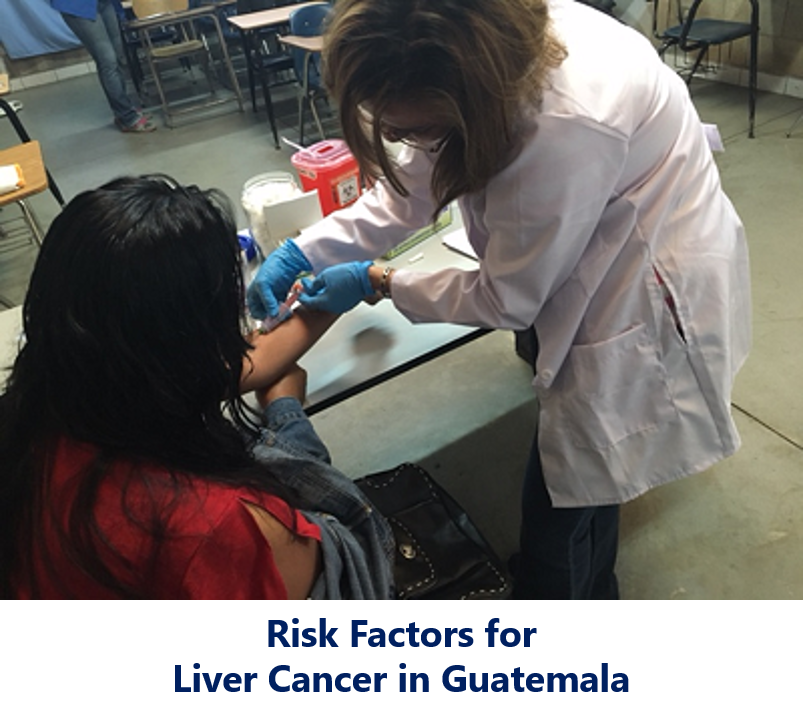
Risk Factors for Liver Cancer in Guatemala
|
Participating institutions name and acronyms |
Institute
of Nutrition of Central America and Panama (INCAP) Research
Center of INCAP for the Prevention of Chronic Diseases (CIIPEC). Bloomberg
School of Public Health, Johns Hopkins University |
|
CIIPEC Researchers |
Manuel Ramírez-Zea, PhD,
Principal investigator Fernanda
Kroker, PhD, Project lead Alvaro
Rivera, MD MPH, Field coordinator Carlos Mendoza, PhD
Co-investigator Manolo Mazariegos, MD, PhD,
Co-investigator |
|
|
Researchers of the Johns Hopkins Bloomberg School of
Public Health Eliseo
Guallar, MD, DrPH, Principal Investigator Johns
Groopman, PhD Mariana Lazo, PhD Patricia Egner, PhD Collaborators form the National Institue of Cancer (NCI) Katherine
McGlynn, MPH, PhD Neal
Freedman, MPH PhD External
collaborators: Olga Torres, MsC (Diagnóstico
Molecular, Guatemala) Joaquín Barnoya, MD, MPH
(INCAN, Guatemala). Eduardo Gharzouzi, MD (INCAN,
Guatemala). |
|
General objective |
This research aims to establish the distribution of
the levels of aflatoxins and other risk factors for liver cancer as well as
to examine their association with liver cancer precursors such as fatty
liver, liver fibrosis and diabetes. |
|
Methodology |
This is a cross sectional epidemiological study
of the association between aflatoxin exposure (measured as serum
concentrations of aflatoxin-lysine albumin adducts) with the presence of
fatty liver disease (aim 1), liver fibrosis (aim 2), and diabetes (aim 3). The study will be conducted in 250 men and
250 women of 40 years of age and older residing in five departments in
Guatemala (Quiche, Solola, Suchitepequez, Escuintla and Guatemala City
Metropolitan Area). The study includes the following
procedures: Interviewer-administered questionnaires
Socio-demographic
data Reproductive history Smoking and alcohol use. Medical history (including medications). Dietary intake Physical activity.
Physical
exam Anthropometry and fat
percentage Blood pressure
Biological
samples Blood samples
|
|
Project duration |
February
2016 to February 2018 |
















